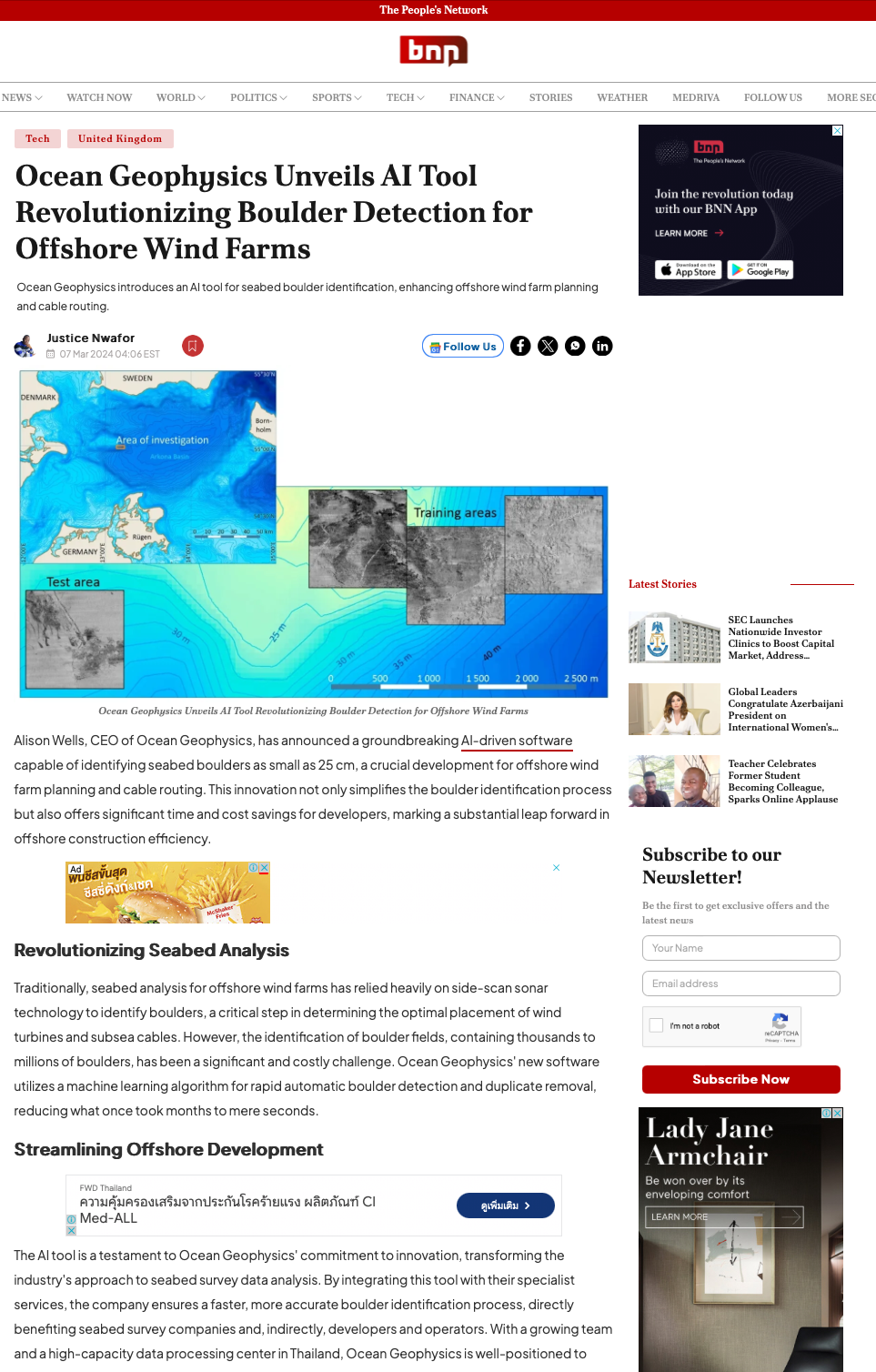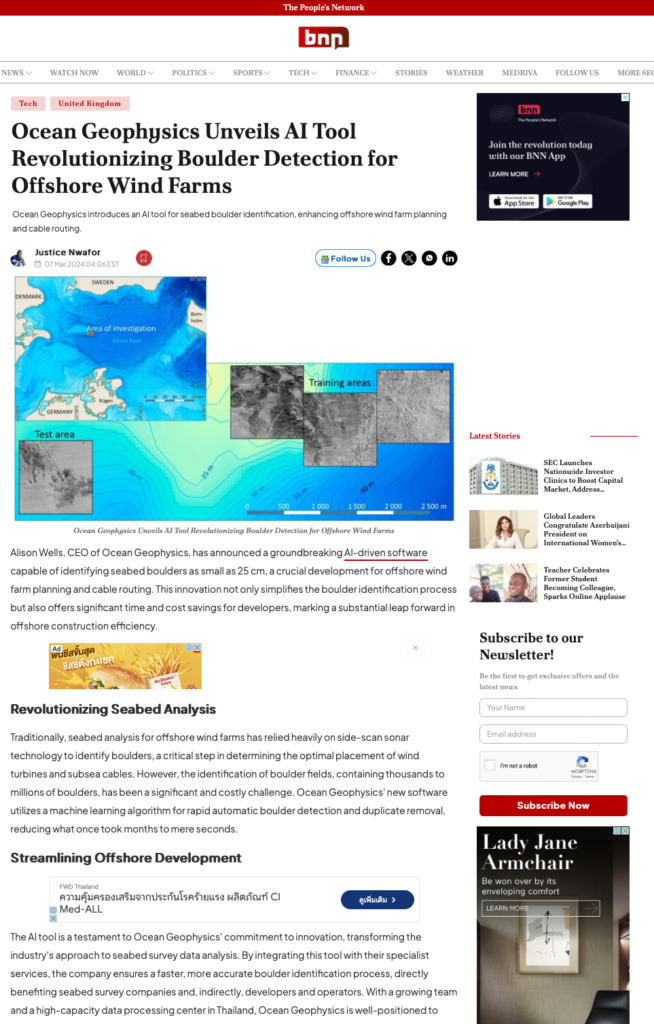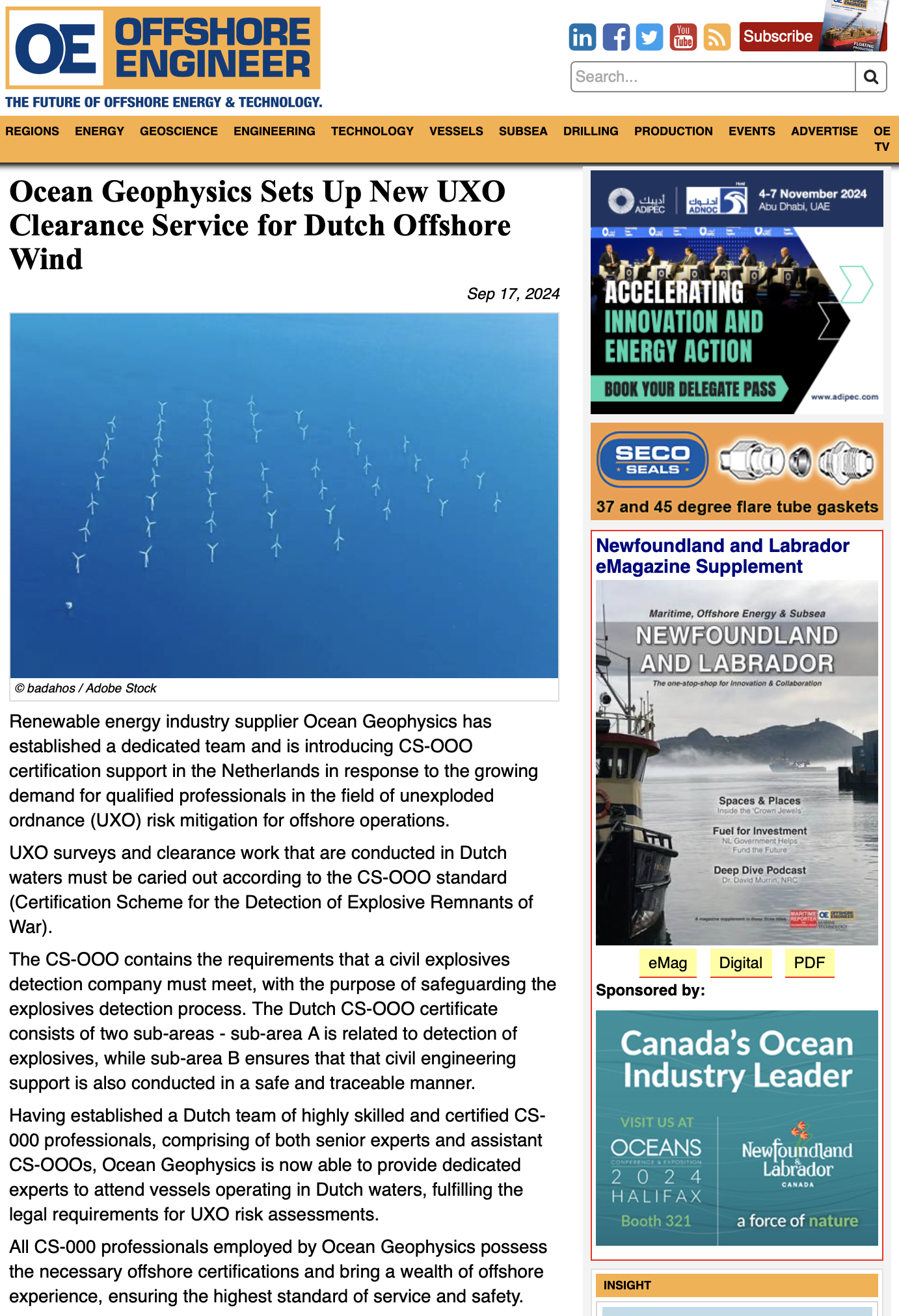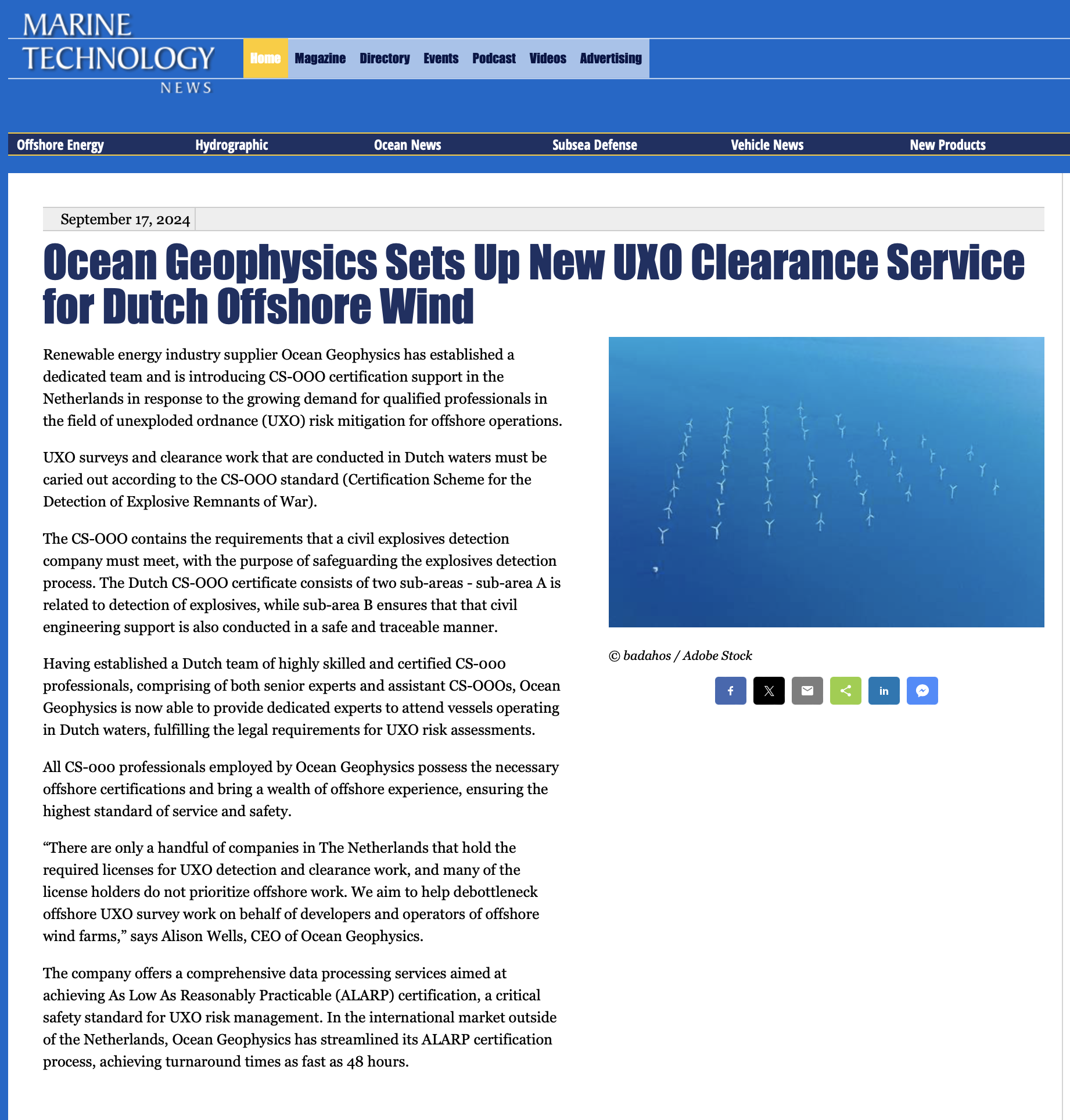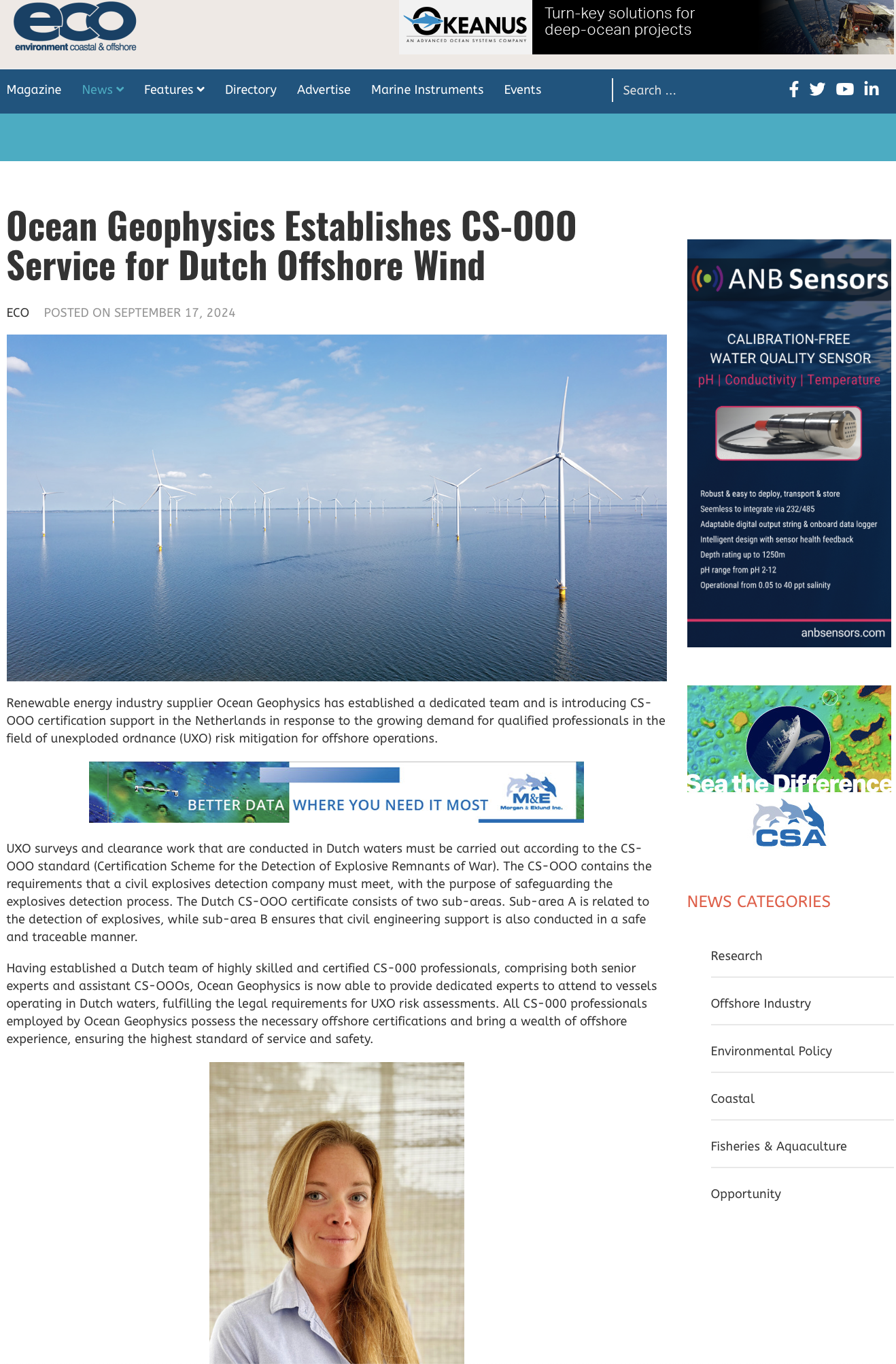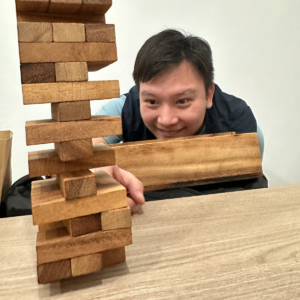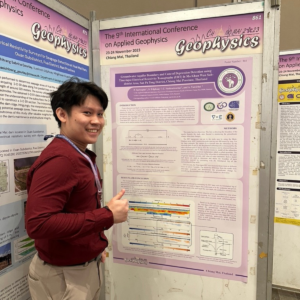Alison Wells, CEO of Ocean Geophysics, has announced a groundbreaking AI-driven software capable of identifying seabed boulders as small as 25 cm, a crucial development for offshore wind farm planning and cable routing. This innovation not only simplifies the boulder identification process but also offers significant time and cost savings for developers, marking a substantial leap forward in offshore construction efficiency.
Revolutionizing Seabed Analysis
Traditionally, seabed analysis for offshore wind farms has relied heavily on side-scan sonar technology to identify boulders, a critical step in determining the optimal placement of wind turbines and subsea cables. However, the identification of boulder fields, containing thousands to millions of boulders, has been a significant and costly challenge. Ocean Geophysics’ new software utilizes a machine learning algorithm for rapid automatic boulder detection and duplicate removal, reducing what once took months to mere seconds.
Streamlining Offshore Development
The AI tool is a testament to Ocean Geophysics’ commitment to innovation, transforming the industry’s approach to seabed survey data analysis. By integrating this tool with their specialist services, the company ensures a faster, more accurate boulder identification process, directly benefiting seabed survey companies and, indirectly, developers and operators. With a growing team and a high-capacity data processing center in Thailand, Ocean Geophysics is well-positioned to support the renewable energy sector’s needs efficiently.
Implications for the Future
This technological advancement is set to have profound implications for the offshore wind industry, where efficient, reliable seabed analysis is paramount. By significantly reducing the time and cost associated with boulder clearance, Ocean Geophysics’ AI tool not only enhances project feasibility but also contributes to the broader adoption and development of renewable energy infrastructure. As the industry continues to evolve, the role of AI and machine learning in optimizing offshore wind farm development becomes increasingly crucial.

